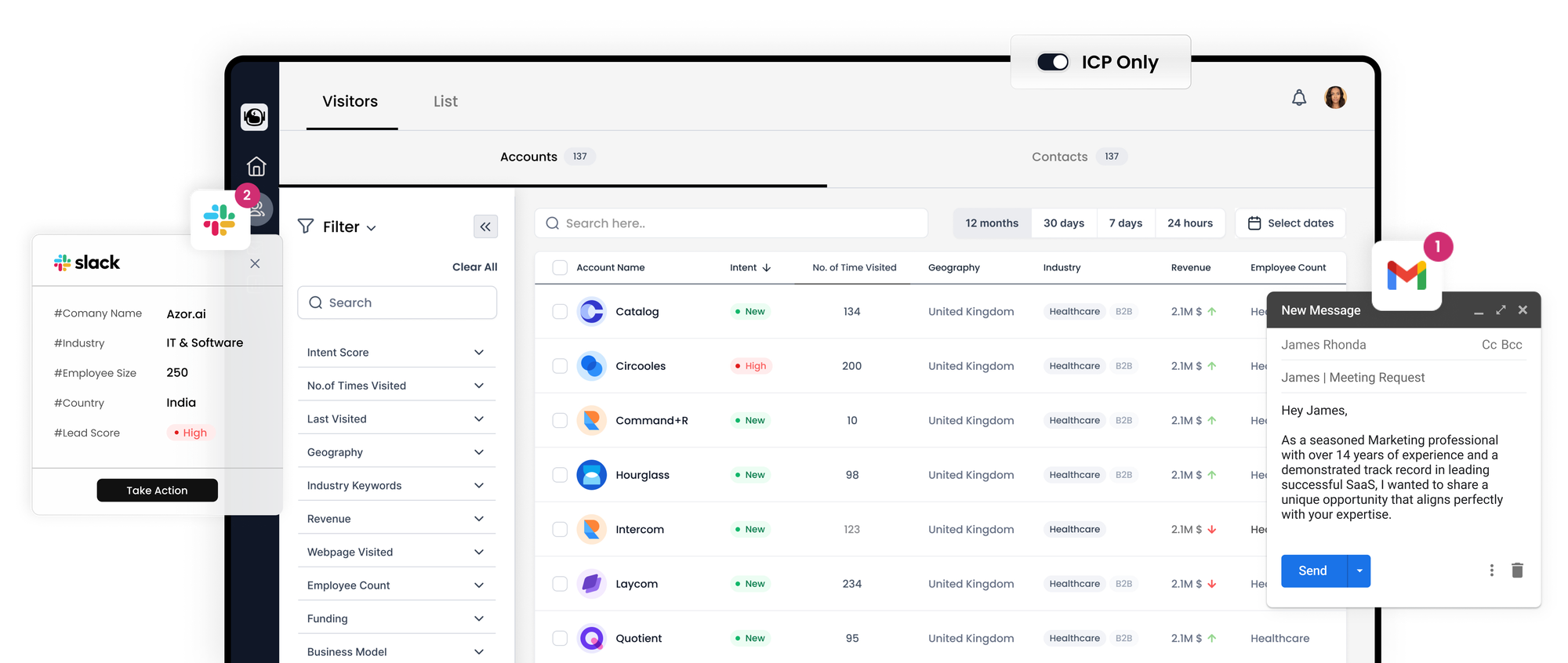Understanding B2B Sales: Definitions, Strategies, and Expertise

Sales, an ever-evolving facet of business, paints diverse pictures—from archetypal door-to-door sales to high-stakes corporate negotiations. It morphs across spectrums like B2B and B2C, adapting to the shifting landscapes of customer desires and business imperatives.
Dive into our exhaustive guide that peels back the layers of B2B selling. Here, we demystify B2B sales with real-world illustrations, lay out effective strategies, and proffer actionable tips, all while spotlighting the latest sales trends to shape you into a maestro of B2B sales.
Decoding B2B Sales
In the realm of business-to-business (B2B) sales, the art of commerce is about facilitating transactions between companies. In essence, one business becomes the vendor, while another takes on the role of the buyer.
B2B and B2C Sales: Unpacking the Differences
While business-to-consumer (B2C) sales focus on direct business dealings with individual customers, B2B sales pivot to interactions with other companies or organizations. Though they both hinge on fostering relationships and customer fidelity, the paths they tread have distinct characteristics.
Customer Demographics: B2B sales court businesses, whereas B2C sales charm individual consumers.
Sales Dynamics: B2B sales typically weave through a tapestry of complex, multi-touchpoint engagements, often culminating in extensive demonstrations and stakeholder negotiations, drawing out the sales cycle. Conversely, B2C sales are more direct and swift, homing in on price points, advantages, and immediate customer needs.
Value of Deals: In B2B, the stakes are higher with deals often commanding heftier price tags and larger volumes, while B2C sees a greater frequency of transactions at comparatively modest values.

B2B Sales Variants and Vignettes
B2B sales can be segmented into five principal arenas:
- Suppliers and producers
- Distributors and resellers
- SaaS (software as a service) and general service providers
- Government agencies and municipalities
- Charitable and nonprofit organizations
Supplier and Producer Engagements
These interactions revolve around vending supplies or raw materials for businesses that craft products. Such deals are usually large-scale and come with buyer incentives.
*Example*: Bunsen Solutions peddles a bulk of chemicals to Darwin Paints for their product formulations.
Distributor and Reseller Transactions
These exchanges mirror supplier deals but involve the purchase of finished products from creators for retail distribution.
*Example*: Darwin Paints channels its array of colors to Shiloh’s Home Improvement chain.
SaaS and Service Provider Sales
Here, the sale is service-oriented, with businesses purchasing services, sometimes alongside equipment, to boost operational efficacy.
*Example*: Zendesk offers subscription-based solutions aiding companies in streamlining their processes.
Government and Municipality Acquisitions
Governments and municipalities, to serve public needs, procure a variety of goods and services, ranging from infrastructure materials to everyday essentials.
*Example*: Carl’s Wholesale Asphalt and Concrete Supply provides the City of Gotham with materials for infrastructural development.
Charity and Nonprofit Procurements
While built on donations, charities and nonprofits still undertake purchases to sustain their activities and missions.
*Example*: Zendesk supplies nonprofit entities with CRM software, facilitating donor interactions and financial oversight.
B2B sales, with its intricate layers and specialized focus, offers a dynamic and nuanced sphere for businesses to explore and excel in. Whether supplying raw materials, distributing retail products, or delivering cutting-edge services, understanding the mechanics and strategies of B2B sales is crucial for today’s businesses seeking to navigate the vast seas of commerce.\
Steps of the B2B Sales Process: A Guide
Picture the B2B sales process as cultivating a garden. It’s a cycle of nurturing—from planting the seeds to enjoying the fruits of your labor.
1. Prospecting
The start of your sales garden. Seek out potential customers—these are your seeds. Determine if they're a good fit for your product. Employ tactics such as:
- Using lead generation tools
- Cold outreach
- Engaging on social media platforms
- Embracing social selling techniques
2. Qualifying
Assess whether your seeds will thrive in the environment. Just as you’d ensure that carrots and lettuce are suited to your garden, ascertain if the potential buyers have the need, interest, budget, and readiness for your product.
3. Connecting
Prepare to meet your seeds. Have your pitch ready, loaded with compelling data and success stories to show how your product can address their specific pain points. A well-delivered demo could be the sunlight needed for the initial growth.
4. Quoting
Time to bring the nutrients—personalized solutions. Work with the customer to find a plan and price that aligns with their needs. The negotiation might be a gentle rain or a heavy storm, depending on the size and needs of the business.
5. Closing
Transplant your seeds. Once you’ve shaken hands (or signed contracts), the growth cycle begins. Implement the solution and start delivering on the promises made.
6. Tracking
Cultivate and watch over the growth. Engage in ongoing support and communication. Your goal is to see a bountiful harvest, meaning the customer reaps the benefits of your product and considers replanting—renewing or extending their contract—with you.
Strategies for Cultivating B2B Sales
To ensure your sales garden flourishes, consider adopting these strategies:
Synchronize sales and support: Make sure your teams work hand-in-hand, just like the sun and rain work together for a garden.
Utilize social selling: It’s like using the right garden tools—efficient and effective.
Highlight solutions and benefits: Show how your product is the best fertilizer for their needs.
Equip your team with proper tools: Just as a gardener needs a hoe and spade, your sales team needs the right technology.
Offer a personalized sales experience: Each customer is a different plant variety; treat them uniquely.
B2B Sales Trends of 2023
As sales landscapes evolve, staying ahead of the curve is like knowing the season’s weather patterns:
AI and Automation: These are like advanced farming techniques, making the process more efficient and less labor-intensive.
Data Integration: Collect and centralize scattered data to avoid obstacles in your sales process.
Personalization and Relationship-Building: Customers value a gardener who knows their plants well. Personalized interactions make for thriving relationships.
Enhancing Sales Skills: Continuous learning and training are akin to sharpening your gardening tools for better performance.
Robust CRM Tools: Invest in systems that can handle the complexity of your sales garden, helping it grow and flourish.
By following these steps and keeping an eye on trends, your B2B sales process can yield a harvest of success, growth, and long-term customer relationships.
